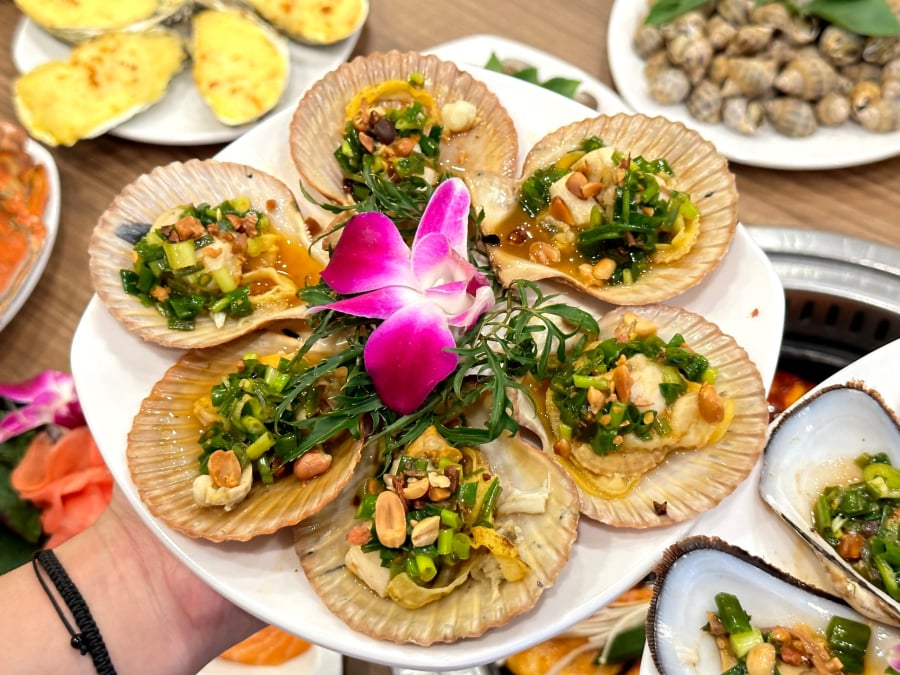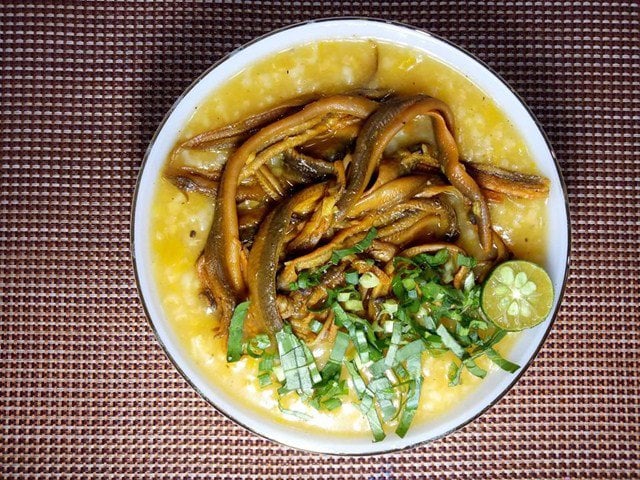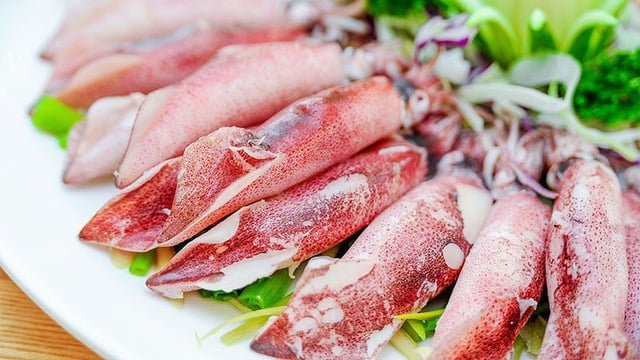Seafood has long been an integral part of Vietnamese cuisine. From the delectable salmon to the sweet scallops, and from the fatty eel to the chewy squid, each offers a unique flavor and high nutritional value. However, few are aware that these delectable dishes may harbor the risk of parasitic infections, posing a serious threat to one’s health if not prepared properly. Let’s delve into four popular yet potentially risky seafood choices, with a special emphasis on the top contender that warrants our utmost caution.
Salmon: An elegant dish with hidden dangers
Salmon is a favored seafood choice due to its abundant omega-3 content and tender meat. However, it also tops the list when it comes to the risk of parasitic infections. According to PGS.TS Nguyen Duy Thinh from the Institute of Biotechnology and Food Technology at Hanoi University of Science and Technology, salmon, which inhabits cold natural waters, is highly susceptible to parasitic infections such as Anisakis – a minuscule yet extremely dangerous roundworm. Once inside the human body, Anisakis can induce intestinal inflammation, severe abdominal pain, and even gastric or intestinal damage.
To ensure safety, opt for frozen salmon stored at -20°C for a minimum of 24 hours prior to consumption. If you’re a fan of sushi or sashimi, ensure the salmon has undergone proper industrial freezing processes. Moreover, thoroughly cooking salmon is the best way to eradicate any potential parasites.

Scallops: Proceed with caution when consuming these bivalves
Scallops are renowned for their translucent white meat and refreshing flavor. However, as bottom-dwellers, scallops are susceptible to accumulating bacteria and parasites from polluted waters. Research highlighted in VnExpress indicates that scallops often harbor the Giardia lamblia parasite, which can lead to gastrointestinal issues such as diarrhea, abdominal pain, and nausea. The risk of infection is heightened if scallops are not thoroughly cleaned or adequately cooked.
Experts advise soaking scallops in a dilute salt solution for about 30 minutes prior to cooking to eliminate any sediment and impurities. Subsequently, ensure they are thoroughly cooked at high temperatures to guarantee safety.

Eel: A delicious delicacy that demands vigilance
Eel is a familiar dish in the Mekong Delta region, especially when prepared as a flavorful banana blossom stew. Nonetheless, few are aware that eels can also be a source of parasitic infections.
According to Dr. Nguyen Van Tien from the Central Hospital of Tropical Diseases, eels are often infected with the roundworm Angiostrongylus cantonensis. This parasite can infiltrate the human brain, leading to meningitis, intense headaches, and neurological disorders.
To mitigate the risk, thoroughly clean eels with salt water and then cook them thoroughly at high temperatures. Avoid consuming raw or undercooked eel dishes, such as eel salads.

Squid: Approach this crowd favorite with caution
Squid is a versatile seafood ingredient, lending itself to a variety of dishes such as grilled, stir-fried, or steamed squid. However, like other marine creatures, squid carries the risk of parasitic infections, notably from Pseudoterranova decipiens, a roundworm commonly found in their internal organs.
According to TS.BS Tran Thi Minh Hanh, Deputy Director of the Ho Chi Minh City Nutrition Center, consuming undercooked or inadequately prepared squid can result in parasite infiltration, leading to symptoms such as abdominal pain, nausea, and diarrhea.
To minimize the risk, it is advisable to remove the squid’s internal organs entirely before cooking. Additionally, always ensure that the squid is thoroughly cooked at high temperatures.

Precautionary Measures: Enjoy Seafood Safely
To relish seafood while maintaining optimal safety, consider the following guidelines:
Select Fresh and High-Quality Seafood
Purchase seafood only from reputable markets or supermarkets with clear origins. Inspect the color, smell, and elasticity of the meat to ensure freshness.
Proper Cooking Techniques
Thoroughly cook all seafood before consumption. If you prefer raw seafood, ensure it has been industrially frozen to standard specifications.
Dining Out
When dining at restaurants or eateries, opt for reputable establishments with food safety certifications. Avoid ordering raw or undercooked dishes unless you are certain of the source.
Seafood is a wonderful gift from the ocean, but it also carries potential risks if not chosen and prepared carefully. Don’t let the joy of savoring seafood turn into a health concern. Implement the aforementioned precautions to safeguard your well-being and that of your loved ones. Remember to share this article with your loved ones so that everyone can enjoy seafood safely. After all, health is our most precious possession.
5 Types of Seafood That Are Considered a “Superfood” for Cancer Prevention
“Nutrition and medical experts have revealed that there are 5 types of seafood that are considered a ‘superfood’ for cancer prevention. However, the majority of people are unaware of these powerful ocean delights. These 5 seafood varieties pack a punch when it comes to boosting your health and potentially reducing your risk of cancer. Get ready to dive into a delicious journey of discovery as we unveil these aquatic superheroes and their potential life-saving benefits.”
10 Superfoods to Prevent Hair Loss and Stimulate Growth: Secrets of Asian Beauty Icons
Introducing a simple way to boost your hair’s health and vitality – from the inside out. Incorporating these foods into your diet is an easy and effective way to nourish your locks, prevent hair loss, and stimulate hair growth. With a variety of nutrient-rich options, you can give your hair the love and care it deserves.
The Ultimate Guide to 2 Veggies Hiding a “Nest of Parasites” – #1 is a Favorite in Vietnam
“A word of caution for all the health-conscious foodies out there: some of your favorite green vegetables may be harboring harmful parasites, especially tapeworms. Believe it or not, two common types of vegetables frequently used in Vietnamese cuisine can become breeding grounds for these parasites if not properly handled and prepared. Stay tuned as we uncover the truth behind these seemingly nutritious yet potentially dangerous veggies, and learn how to protect yourself from unwanted guests!”



































